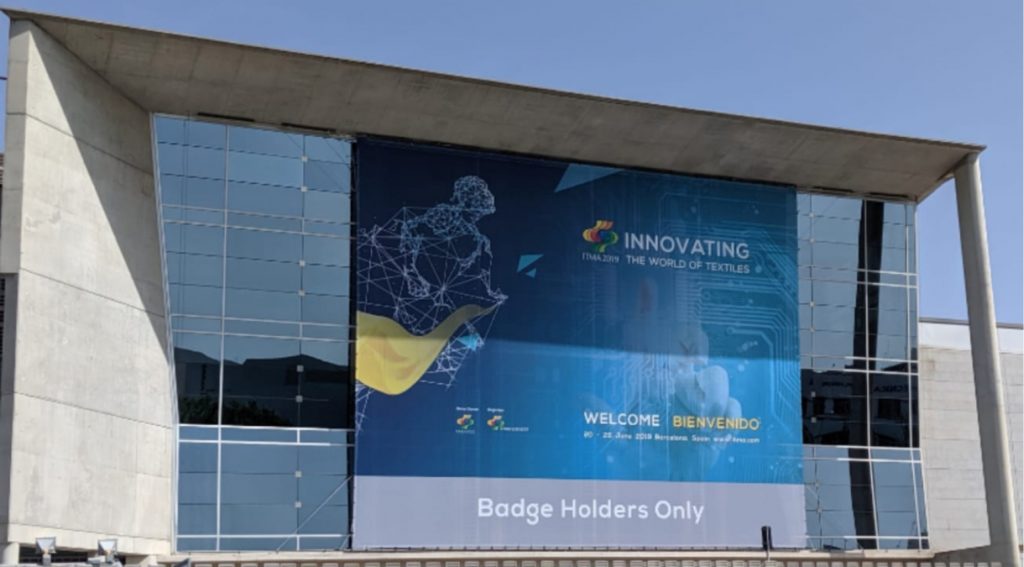Over the course of my career at AD Communications I’ve built a reputation as the agency’s resident exhibition junkie – if it’s got stands and halls, I’m there. I have covered print, plastics, packaging and label events multiple times, to the point where I can work my way around an expo with my eyes closed… but not once have I had the opportunity to check out a pure textile show. So it was with great anticipation that I approached ITMA for a two-day visit last week.
Ever since its inauguration in Lille in 1951, ITMA has gone on to become a well-attended textile and garment technology exhibition that’s held every four years. What originally began as a European show launched by CEMATEX (the European Committee of Textile Machinery Manufacturers) has matured into a truly international event that comprises a rich diversity of technology offerings, becoming a key event in the calendar of thousands of textile business owners. ITMA is now a meeting point where visitors and exhibitors converge to explore and discuss the latest products and trends of a highly profitable industry experiencing year on year growth, with a projected global value of $899.5 billion for 2020 (MarketLine – 2017).
With print being one of AD’s specialist markets, I was drawn primarily to Hall 3’s offering at the show, which was focused mainly on printing, as well as garments, fabrics and colorants. Printing may not have made up the most significant component of ITMA – 157 out of 1,717 exhibitors specialised in printing – but all it took was a quick browse of exhibitor stands to notice that the effect that digital is having in other segments of the wider print industry is also being felt in the textile arena.
As also seen at other high profile events such as FESPA Global Print Expo 2019, digital textile printing is rapidly evolving. It is evident that there is a huge range of possibilities for what can be achieved when combining textiles and digital for all types of applications, ranging from apparel and sportswear to signage and interior décor. The conversations I had with exhibitors revealed that on-demand printing, JIT production, print personalisation and mass customisation are all trends that are currently driving their businesses, in much the same way as they are impacting retail, décor and publishing. In some cases these trends are proving to be a challenge, especially for screen printers that need to take extra measures to compete with the flexibility afforded by digital print.
Exploring the show further revealed that it’s not just digital print that is shaping textile, but digital transformation as a whole. Industry 4.0 featured strongly at plastics and packaging events of recent years, and this time it was ITMA’s turn, with multiple exhibitors choosing to incorporate the term into their core messaging. And while it might be tempting to cynically dismiss it as a trade show buzzword, it’s fascinating to witness the impact Industry 4.0 is having on textile production processes.
A growing number of the textile sector’s technology providers are working towards the digitalisation of the entire value creation chain. 3D body scanners, simulation software for design, automated robotic solutions and predictive cutting systems are just a few of the components of the ‘smart textile factory’, an interconnected production line that goes beyond warehouse walls and national borders, and in which digital printing has a key role to play. Achieving such a level of connectivity would result in maximum efficiency, so it’s not difficult to see why so many companies are aiming for it.
All in all, ITMA left me with the impression of an exhibition brimming with innovation and where the potential of the textile industry was on full display. It will certainly be interesting to see the direction of this vast and varied sector in the coming years and Fiera Milano might just be the place for an in-depth recap in four years’ time.
